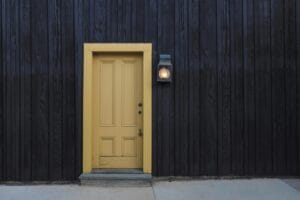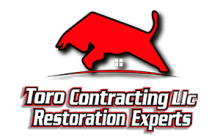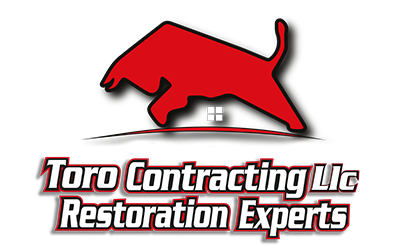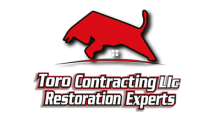Imagine standing outside your home after a fierce storm, watching as rain pelts the windows and wind howls through the trees. You feel safe inside, knowing your house is shielded by siding that can withstand even the harshest weather conditions. But choosing the right siding isn’t just about looks, it’s about durability, resilience, and how well it performs in your specific climate.
If you’ve ever wondered how to select the best siding that lasts, boosts energy efficiency, and withstands your local weather challenges, this guide is for you. We’ll break down the benefits of popular durable siding materials, offer practical tips for installation and upkeep, and help you make an informed decision tailored to your environment. Let’s dive in and discover siding solutions built to endure, no matter where you call home.
Key Takeaways
Match siding to climate: Evaluate your region’s specific challenges—whether freeze-thaw cycles, UV exposure, moisture, or salt air—and choose materials built to withstand those conditions.
Know your material options: Fiber cement, vinyl, engineered wood, metal, and brick/stone veneer each have unique strengths; compare their resistance to moisture, impact, fire and UV before deciding.
Balance upfront cost vs. lifecycle value: While premium sidings like fiber cement or stone veneer may cost more initially, their lower maintenance needs and longer warranties often yield greater savings over time.
Prioritize professional installation: Proper flashing, ventilation and fastening ensure your siding can expand/contract safely and shed moisture—key factors for long-term performance.
Factor in maintenance requirements: Understand repainting schedules, cleaning routines, and sealant needs for your chosen material to protect both its appearance and integrity.
Consider energy efficiency: Insulated siding products not only add durability but can also cut heating and cooling bills by up to 20%, making your home more comfortable and eco-friendly.
Don’t sacrifice aesthetics for resilience: Modern siding comes in a wide range of colors, textures, and profiles—so you can find a durable solution that also enhances curb appeal.
Plan for the long haul: Look for strong manufacturer warranties and contractor guarantees; durable siding is an investment that pays off through reduced repairs, lower energy costs, and sustained beauty.
Why Choosing Durable Siding Options for Every Climate Matters More Than Ever
When it comes to protecting your home, selecting the right siding is a decision that goes beyond mere aesthetics. Durable siding options for every climate play a crucial role in preserving the structural integrity of your house while enhancing its curb appeal. But what exactly makes siding durable, and why is it so essential across different weather zones? In this section, we will explore the importance of durable siding, backed by relevant data, and share an inspiring story of a homeowner who transformed their property by choosing the right siding for their specific climate.
Durable siding refers to exterior cladding materials designed to withstand the environmental challenges posed by various climates, be it scorching heat, heavy rain, frigid snow, or salty coastal winds. The need for durable siding options for every climate has become paramount as weather patterns grow more unpredictable and severe due to climate change. According to the Insurance Information Institute, the number of severe weather events in the United States has risen dramatically over the past decade, increasing the risk of damage to homes that are not prepared to endure such extremes.
Statistics reveal that homes with high-quality, climate-appropriate siding can reduce maintenance costs by up to 40% over their lifespan compared to those with standard siding materials. Moreover, Energy Star reports that durable siding options with proper insulation significantly enhance a home’s energy efficiency, reducing heating and cooling bills by up to 20%. This means that investing in the right siding is not just about withstanding physical damage; it also contributes to long-term financial savings and environmental sustainability.
In summary, understanding the significance of durable siding options for every climate equips homeowners with the knowledge to make informed decisions. This choice safeguards their investment against weather-related wear and tear while enhancing energy efficiency and overall comfort. Next, we will delve deeper into the best materials available for different climates, helping you find the perfect siding match for your home’s unique environment.
How to Choose Durable Siding Options for Every Climate: A Step-by-Step Guide
When it comes to selecting the perfect siding for your home, durability is key, especially when you want your exterior to withstand the challenges of any climate. Choosing durable siding options for every climate requires understanding the unique demands of your environment and matching them with the best materials and installation practices. Here’s a comprehensive, step-by-step guide to help you navigate this crucial decision confidently.
Step 1: Assess Your Local Climate Conditions
Before diving into the various siding materials, it’s essential to understand your local weather patterns. Different climates impose different stresses on siding:
– Cold climates: Often involve freeze-thaw cycles, snow accumulation, and high moisture.
– Hot and dry climates: UV exposure and heat can cause fading and warping.
– Humid and rainy climates: Risk of mold, mildew, and rot is increased.
– Coastal areas: Salt air accelerates corrosion and wear.
Understanding these factors will help you zero in on siding materials specially built to stand up to your region’s challenges.
Step 2: Research Durable Siding Material Options
There are several durable siding options for every climate, each with unique strengths:
– Fiber cement siding: Highly resistant to moisture, termites, and fire. It holds up well in hot, humid, and cold climates.
– Vinyl siding: Affordable and low maintenance, but quality varies. Advancements have made it more impact-resistant, suitable for moderate climates.
– Engineered wood siding: Designed to resist rot and insect damage while providing a classic wood look, ideal for varied climates with proper installation.
– Metal siding (aluminum or steel): Excellent durability against wind and fire, resistant to salt corrosion with proper coatings, great for coastal areas.
– Brick and stone veneer: Extremely durable, weather-resistant, and low maintenance. They offer superior insulation and work in virtually every climate.
Step 3: Match Material Properties to Climate Requirements
Use a simple matrix to evaluate how each siding material performs against your climate’s key challenges:
Step 4: Consider Maintenance and Longevity
Durable siding isn’t just about resistance, it’s about how easy it is to care for over time:
– Fiber cement: Low maintenance but can require repainting every 10-15 years.
– Vinyl: Very low maintenance; occasional cleaning.
– Engineered wood: Requires periodic sealing or painting.
– Metal: Minimal maintenance; may need repainting every 10 years.
– Brick/Stone: Virtually maintenance-free but may need tuckpointing over decades.
Step 5: Evaluate Installation Requirements and Costs
Durability also depends on quality installation:
– Choose experienced contractors: Proper installation ensures that siding can expand/contract and resist moisture.
– Look for warranty guarantees: Durable siding options typically come with strong warranties indicating product longevity.
– Factor in initial and long-term costs: Sometimes higher upfront costs pay off in greater durability and fewer repairs.
Step 6: Visualize with Examples and Images
Imagine your home’s exterior facing harsh winter winds, you select fiber cement siding. Its dense composition and moisture resistance prevent warping, visible in the way the siding holds its crisp lines despite snow buildup.
Or imagine a coastal home battered by salty air, metal siding with a protective coating offers robust corrosion resistance, maintaining a sleek finish year after year.
Step 7: Make Your Decision Confidently
Armed with climate knowledge, material characteristics, maintenance expectations, and budget considerations, you’re now ready to pick durable siding options for every climate that will protect your home beautifully for decades.
By following this clear step-by-step process, you’ll not only ensure durability but also enhance your home’s curb appeal and value, no matter where you live. Durable siding options for every climate exist, and with the right approach, you’ll find the perfect fit for your unique needs.

Tips for Choosing Durable Siding Options for Every Climate:
✅ Choose fiber cement siding: Highly resistant to moisture, fire, and pests, making it ideal for humid and variable climates.
❄️ Opt for vinyl siding in cold regions: Offers excellent insulation and withstands snow and ice without cracking.
🌞 Consider metal siding for hot climates: Reflects heat effectively and resists warping under intense sun exposure.
💧 Install cedar or redwood siding in wet climates: Naturally resistant to rot and insects when properly sealed and maintained.
🔥 Use stucco in dry, arid areas: Durable against sun damage and minimal rain, but ensure proper installation to prevent cracking.
❌ Avoid wood siding in extremely humid or rainy regions without proper treatment: It tends to swell, rot, or attract termites.
💡 Look for insulated siding products: These provide extra energy efficiency and durability in both hot and cold environments.
🔧 Prioritize professional installation: Properly installed siding lasts longer and performs better regardless of climate.
By selecting the right siding material tailored to your local climate, you ensure your home remains protected, energy-efficient, and visually stunning for years to come.
Key Concepts
When discussing Durable siding resists mold. It’s also energy-efficient and designed to last for decades., it’s essential to unravel the intricate relationship between materials, environmental challenges, and architectural needs. Siding, which serves as the protective skin of a building, operates much like the armor of a medieval knight, shielding the structure from external assault, whether it be relentless rain, brutal sunlight, howling winds, or biting cold. Understanding the key concepts embedded in this topic allows us to appreciate the science and art that go into selecting siding materials designed to endure diverse climatic conditions.
The Essence of Durability in Siding
Durability in siding is about more than just withstanding the test of time; it’s about resilience in the face of nature’s many moods. Imagine siding as a seasoned storyteller, weathering the storms and sunlit days, it must retain its integrity and appearance without fading into the background or cracking under pressure. Durability hinges on a siding’s ability to resist damage caused by moisture intrusion, ultraviolet rays, temperature fluctuations, and mechanical wear.
Climate as a Defining Character
Just as a novel’s setting shapes its narrative, climate shapes which siding options will thrive or falter. Coastal regions, with their salty breezes and humid air, challenge materials with corrosion and mold. Mountainous areas expose siding to snow load and freezing temperatures, testing its resistance to cracking and thermal contraction. Arid deserts bring intense sun exposure and sudden temperature swings, prompting materials to withstand expansion stress and UV degradation.
If siding were a traveler, it would need to pack different gear for different journeys, each climate commands a unique set of defenses.
Material Composition and Performance
At the heart of durable siding options lies the intrinsic qualities of the material itself. Whether natural or synthetic, every siding type possesses a molecular structure that dictates how it interacts with its environment:
– Wood echoes the qualities of a living organism, with natural grain and flexibility but also vulnerability to moisture and pests. Its endurance relies heavily on treatment and maintenance.
–Vinyl, akin to plastic’s adaptable form, is crafted for resistance to moisture and insect damage. However, its performance in extreme temperatures demands consideration of thickness and quality.
– Fiber Cement, a composite material, blends cement, sand, and cellulose fibers. Like a fortress forged from earth and stone, it boasts incombustibility, resistance to rot, and minimal expansion with temperature shifts.
– Metal Siding, often aluminum or steel, conjures the image of a sleek shield, lightweight yet formidable against impact, UV rays, and pests. Its protective coatings are crucial for long-term resilience against rust.
– Natural Stone or Brick Veneer, heavy and enduring, provide an almost immutable barrier against weather but come with considerations related to installation complexity and cost.
Moisture Management: The Invisible Butler
One of the silent battles siding faces is moisture management. Moisture is like an uninvited guest who wears down structures slowly but relentlessly. Siding must not only block direct water ingress but also allow trapped moisture within the wall system to escape, much like a well-ventilated coat that keeps a hiker dry from both rain and sweat.
This dynamic balance between impermeability and breathability differentiates mere coverings from true protective siding solutions.
Thermal Expansion and Contraction
Materials expand and contract with temperature changes, a phenomenon that can be likened to the rhythmic breathing of a structure. Over time, these subtle movements can cause cracking, warping, or loosening if the siding material lacks the flexibility or design considerations to accommodate them.
An effective siding solution recognizes these natural rhythms and incorporates tolerance for environmental stress, ensuring longevity.
Aesthetic Longevity Meets Functional Integrity
Durability isn’t solely about function; it’s intertwined with aesthetic endurance. Siding materials not only guard against physical threats but also maintain color, texture, and visual appeal over years. This duality is much like a timeless piece of art that doesn’t just survive but also continues to captivate.
In different climates, the way sunlight diffuses or how moisture accentuates surface features impacts how siding ages – a truly durable siding option harmonizes strength with sustained beauty.
In summary, grappling with durable siding options for every climate invites us into a world where material science meets environmental adaptation. It’s a dance between resilience and aesthetics, between the tangible forces of nature and the engineered responses of human design. Like a finely crafted tale, successful siding integrates setting, character, and plot, a setting defined by climate, characters embodied in materials, all woven together to withstand the tests time and weather impose.
Frequently Asked Questions
❓ What are the most durable siding options for extreme climates?
For extreme climates, fiber cement siding and engineered wood siding are among the most durable. Fiber cement withstands both heavy rain and extreme heat, while engineered wood offers excellent insulation and durability in cold or humid areas.
❓ How does climate affect siding material choice?
Climate plays a crucial role in siding selection. In wet climates, you need water-resistant materials like vinyl or fiber cement. Hot, sunny climates require UV-resistant siding such as stucco or fiber cement. In cold regions, insulation and durability against frost are key, making insulated vinyl or fiber cement great choices.
❓ Is vinyl siding durable enough for all weather conditions?
Vinyl siding is quite popular due to its affordability and resistance to moisture, making it durable in wet climates. However, in extremely hot or cold climates, it may warp or crack if not properly installed or maintained. Choosing insulated vinyl siding can improve its performance across different weather conditions.
❓ How often should siding be maintained in harsh weather conditions?
Maintenance frequency depends on the siding type and climate. In harsh climates, siding should be inspected at least once a year for damage, cracks, or warping. Fiber cement siding requires repainting every 10-15 years, while vinyl siding only needs occasional cleaning.
❓ Can the right siding increase my home’s energy efficiency?
Absolutely. Durable siding options like insulated vinyl, fiber cement with added insulation, and engineered wood help reduce energy loss by providing better thermal protection. This not only makes your home more comfortable year-round but also lowers energy bills significantly.
These FAQs help homeowners choose the best durable siding options tailored to their specific climate, ensuring protection and longevity for their homes.






